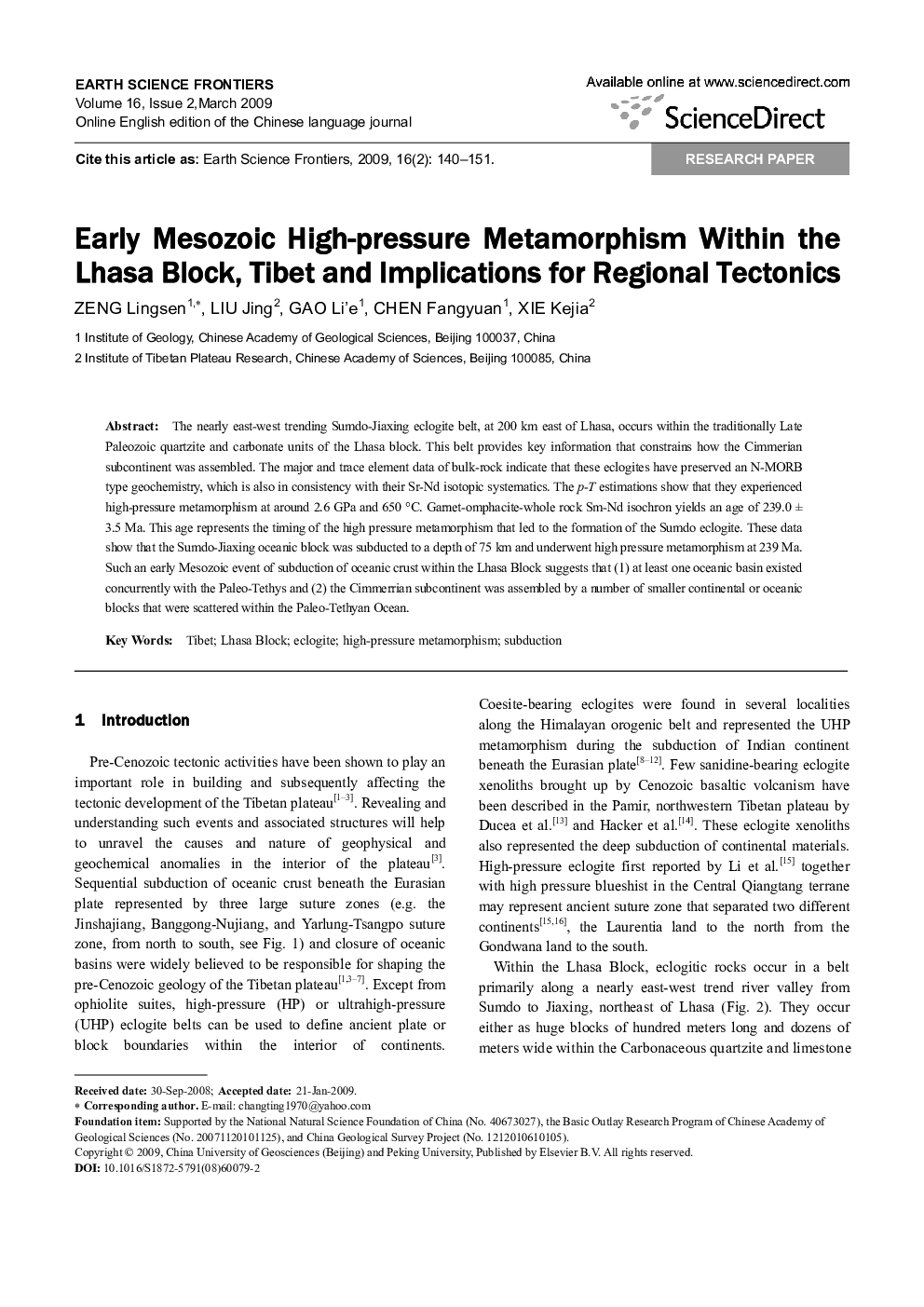| Article ID | Journal | Published Year | Pages | File Type |
|---|---|---|---|---|
| 4701548 | Earth Science Frontiers | 2009 | 12 Pages |
The nearly east-west trending Sumdo-Jiaxing eclogite belt, at 200 km east of Lhasa, occurs within the traditionally Late Paleozoic quartzite and carbonate units of the Lhasa block. This belt provides key information that constrains how the Cimmerian subcontinent was assembled. The major and trace element data of bulk-rock indicate that these eclogites have preserved an N-MORB type geochemistry, which is also in consistency with their Sr-Nd isotopic systematics. The p-T estimations show that they experienced high-pressure metamorphism at around 2.6 GPa and 650 °C. Garnet-omphacite-whole rock Sm-Nd isochron yields an age of 239.0 ± 3.5 Ma. This age represents the timing of the high pressure metamorphism that led to the formation of the Sumdo eclogite. These data show that the Sumdo-Jiaxing oceanic block was subducted to a depth of 75 km and underwent high pressure metamorphism at 239 Ma. Such an early Mesozoic event of subduction of oceanic crust within the Lhasa Block suggests that (1) at least one oceanic basin existed concurrently with the Paleo-Tethys and (2) the Cimmerrian subcontinent was assembled by a number of smaller continental or oceanic blocks that were scattered within the Paleo-Tethyan Ocean.
